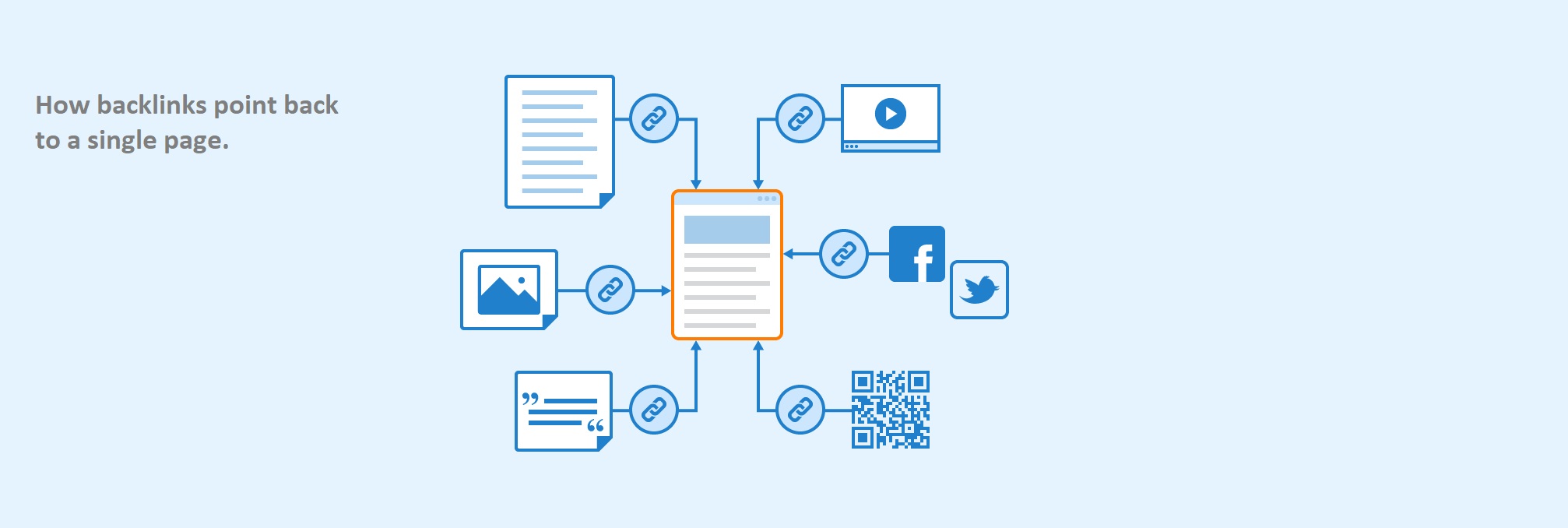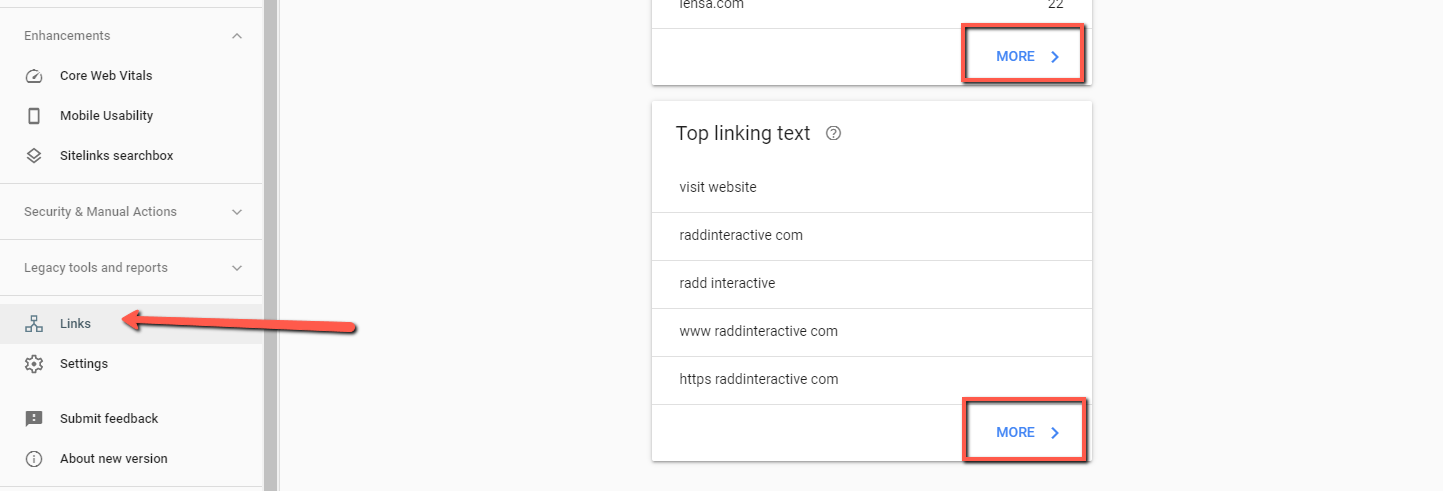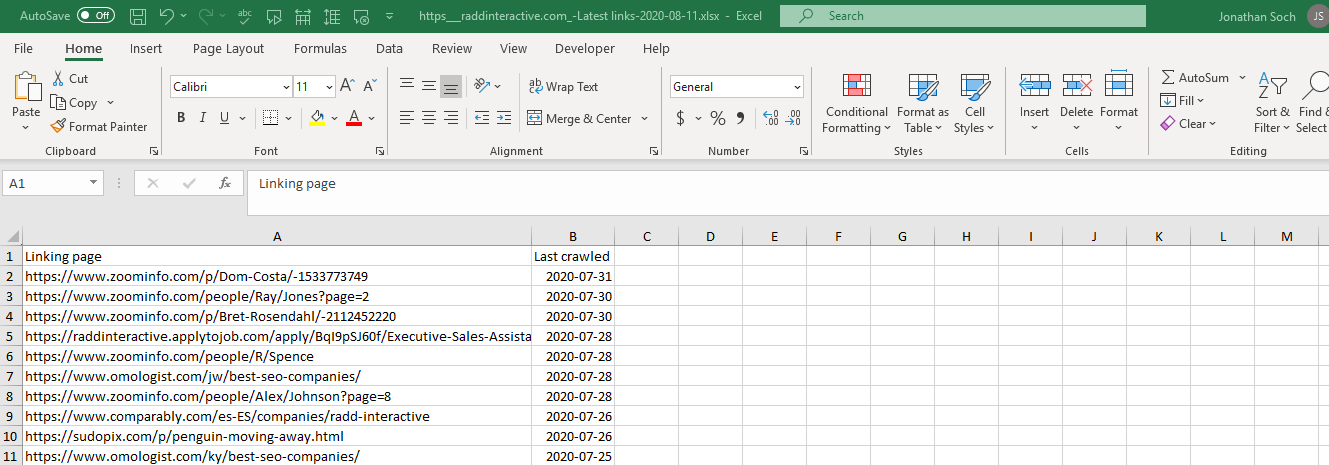Google Search Console’s Backlinks & Site Links (Our Guide!)
The Google Search Console backlinks report is a useful feature that allows websites to understand how their link profile is changing over time.
We decided to create a guide to the Search Console link report so that businesses and marketers can better understand their site links profile and discover important information on how their site’s SEO health is doing. Google’s free Search Console tool gives you opportunities to audit your site for issues and to monitor your presence in the search index.
Since backlinks are an important part of Google’s algorithm, monitoring your backlink profile can help you understand how to improve your SEO campaign strategy and how to avoid bad practices that could lead to a penalty.
Why are links important?
Ever since marketers first learned the value of search engine optimization, one thing has remained constant: backlinks are crucial to SEO rankings.
This concept goes all the way back to the early days of the search engine with the PageRank algorithm. It was designed as part of the algorithm that could measure the amount and value of links to do a domain by treating them as “votes.”
It was designed by Google’s founders Larry Page and Sergey Brin to algorithmically track and weigh the value passed through links to a certain page – and to measure the inscrutable sum of those links, assigning a rank for each page in search results. These are typically called “backlinks” and the more high-quality backlinks a page has the better it will rank. In turn, any pages that it links to will also rank higher.
These links also are important for passing on context clues to Google, which can help it understand the content and relevancy of pages. Google’s indexing bot will travel the web using href attributes (a.k.a. links) to discover an index more pages on a site or on other sites. The content of link source-pages, as well as the anchor-text in links can help associate your pages with certain keywords and improve rankings.

Via SEObility
This is the core concept behind a backlink profile and for search engine optimization (SEO) it can work both ways – leading to your site sitting pretty in a good place or struggling in a bad link neighborhood. If low-quality, spammy, or harmful sites are linking to your site too much, it might be an indication to Google that your site does not have a great reputation and it could lead to poor SEO performance.

The Google Search Console sitelinks report
All of this is a part of why Google gave webmasters a way of monitoring their backlinks. With Google Search Console you can see links to your site and watch for suspicious links.
Here’s how you do it.
Log in to your Console Account and find the domain for your site. If you don’t have Search Console then you can set it up for free, by creating an account and verifying your domain. You can use your existing verification with your Google Analytics account, you can add a unique HTML tag to your site, upload a specific file, or even use an alternative tracking platform like Google’s Tag Manager.
In Search Console, under the correctly property navigate to “Links” on the left side navigation menu. From there you can click on “MORE” under each report to see the full table.

Here there are reports for a couple different types of links including:
- External links
- Top linked pages from external sites.
- Top linking external websites.
- And top linking text from external sites.
- Internal links
- Top linked pages that are linked to from within your site.
Here’s what you should know about the information in this report: The pages shown in the Search Console sitelinks report are represented by canonical URLs, meaning that things like anchor tags, URL parameters, and session based URLs are omitted from the listed URLs. Webmasters won’t be able to get information on these elements for how external sites are presenting their pages – at least not without visiting those pages themselves.
Similarly, duplicate links are combined by Google in order to have simpler data. That means if a page contains multiple links to the same page on your Search Console property, it will only be counted once. (Truth be told though, for SEO purposes this can help with clarity since it imitates the way that Google’s indexing algorithm works. Identical links on the same page are ignored by Googlebot and do not pass on any additional authority to the destination page.) If you’re checking your Search Console backlinks profile to gauge your SEO strength, then there’d be no benefit to having links counted twice.
Even though your Search Console property only provides data for the specific domain you have verified (unless you have a “domain property”) Search Console does group all backlinks by the root domain. This means that you won’t see information like protocol (http vs https) or subdomain (like “m.example.com”). You will only see information for top level domains like country codes.
Top linking sites (which domains link to you the most)
Just like the name implies this report is best for seeing which sites link to your site the most.
This report is the main area where you will see Search Console “backlinks” since this is the report that will show you external links coming to your site from the outside.

The report shows site owners the root domain for all of the “backlinks” that are pointing towards your site. The whole table is sorted from highest to lowest and features a count of your “total external links.”
This gives you a nice summary of your Google Search Console backlinks profile, but it’s important to remember that the “total count” number here is not a good measure of your SEO performance or ranking. The effect that backlinks have on SEO performance is less about the amount and more about the quality and relevancy, so although having more backlinks can be good, it’s not a sure thing.
For even more detailed info, you can click on each domain to see a list of pages that the site is linking to. This way if it’s a high-quality site you can see which of your own pages are benefiting from these links.
It’s also important to know that this report won’t be affected by your site’s disavow file, so links that have been disavowed will still be counted here.
What is the use of the “Top linking sites” backlink report in Search Console? One good use is to confirm that the sites you see here are recognizable and make sense in the context of your business. If you see any unknown, dishonest, or spammy sites there’s a possibility that these could be placing you in a bad link neighborhood.
Top linked pages (which pages are linked to the most from other sites)

If you want to see which of your pages are garnering you the most links, then the “Top linked pages” report can help. It shows Google Search Console’s listed backlinks in order of highest to lowest for pages in your property with the most incoming links from external pages.
Just like with the other sitelink and backlink reports, you can also see the total number listed at the top of the report.
You can click on each page in the report to see another list of domains (this will only show linking domains, not the exact source URLs). The “top linked pages” Search Console backlink report provides a few options for filtering by the number of links or the text within the links themselves (see an example in the image below).

A lot of marketers will refer to this report when considering whether or not to update their disavow file. We recommend you monitor this link report in Search Console for a while first to understand how your link profile shifts around. Disavow links only when necessary. In some extreme cases, it may be beneficial to disavow links, but that comes with some risk.
Top internal linked pages (which pages are you linking to the most on your site)
Since “backlinks” describe links coming from outside domains, this might not qualify as Google Search Console backlinks report, but it’s included in the same “Links” report as all the other information.
This table shows which pages on your site have the most internal inbound-links, sorted from highest to lowest.
This might help you analyze your site structure to make sure important pages are more central. For marketers looking to use internal link as an SEO strategy, being able to understand page relationships is important. (Many businesses opt to get professional SEO services, so that they can take advantage of technology for site analysis.)
Exporting extra Search Console backlinks data
Finally, there’s an option to export additional data. Although you can export each individual table in the links report, Search Console also lets you export data for new backlinks or a larger data set of links.
The button for this is in the upper left corner. This option is available in the primary “Links” report and is under the button named “Export External Links.” This report provides extra information not available in the individual tables below.

This way users can export that data to a Google Sheets doc, a CSV file, or a Microsoft Excel formatted doc. (The export option will allow you to see up to 100,000 rows of data along with extra info not included in Search Console:
- Latest links: These are the most recent links discovered by Googlebot pointing to your site, sorted by the date they were found.
- More sample links. This means a more complete set of links that may not be shown in cases where the data is truncated by the “Latest links” data. It’s a more complete picture of your total link profile.

Should you mess with backlinks for SEO?
Google’s Search Console backlinks report can be useful for understanding your domains link profile and for tracking link growth for your site.
Since backlinks are such and important part of the ranking algorithm it’s great for businesses and webmasters to be able to get a sense of how many links their site has and to monitor how their link profile changes over the course of their SEO campaign or their content marketing campaign.
But the truth is, that for modern SEO, backlink growth has become much less proactive then it used to be – and that’s how Google wants it.
Google’s ranking and indexing algorithm is designed to ignore known spam sites or low-quality links. In 2016 Google continued to evolve its Penguin algorithm update in order to devalue bad links instead of simply demoting the destination page. It was better able to differentiate between spam links and legitimate links. It was also designed to focus on link building schemes like bought links and private blog networks.
Basically, if your site is getting bad links without you even trying, you could be saved by Penguin.
This is good for SEO since it means you can’t be hurt by bad links that you never intended to have – and it means that often disavowing links is no longer necessary (usually). If Google understands bad links to be illegitimate it will simply not factor them in when considering where to rank your pages.
The flip side to this is that if you are deliberately engaged in black-hat link building schemes, then you could lose rankings drastically if Google’s Panda algorithm finds those links to be not good. Over the years this has become a greater focus for Google, which insists that marketers shouldn’t engage in sketchy schemes to try and gain backlinks, but instead should focus on creating good content that leads to more shares, and more links naturally.
Essentially, best practice is to focus on content-based, inbound marketing/SEO that leads to having outside domains link to your content based on its own merit.
Google’s experts have publicly said to avoid link-building in general, and to just make it easier for others to share your content. Here’s what Google tells webmasters:
“…So that you are really sure that your content kind of stands on its own and make it possible for other people of course to link to your content. Make it easy, maybe, put a little widget on your page: ‘if you like this, this is how you can link to it’. Make sure that the URLs on your web site are easy to copy and paste. All of those things make it a little bit easier.”
“We do use links as part of our algorithm, but we use lots and lots of other factors as well. So only focusing on links is probably going to cause more problems for your web site than actually helps.”
As always they emphasize good content, and good user experience as the only legitimate strategies for link growth:
“…the traditional good link is someone who comes across your website and thinks it’s a fantastic website and recommends it to other people with a link.”
Random links collected over the years aren’t necessarily harmful, we’ve seen them for a long time too and can ignore all of those weird pieces of web-graffiti from long ago. Disavow links that were really paid for (or otherwise actively unnaturally placed), don’t fret the cruft.
— 🍌 John 🍌 (@JohnMu) January 25, 2019
Learn More
Contact us to get more information on how to understand your Google Search Console backlinks report. Our strategic SEO team can help you optimize your business for better rankings and better growth. Check out our SEO client testimonials to see how we do it.
